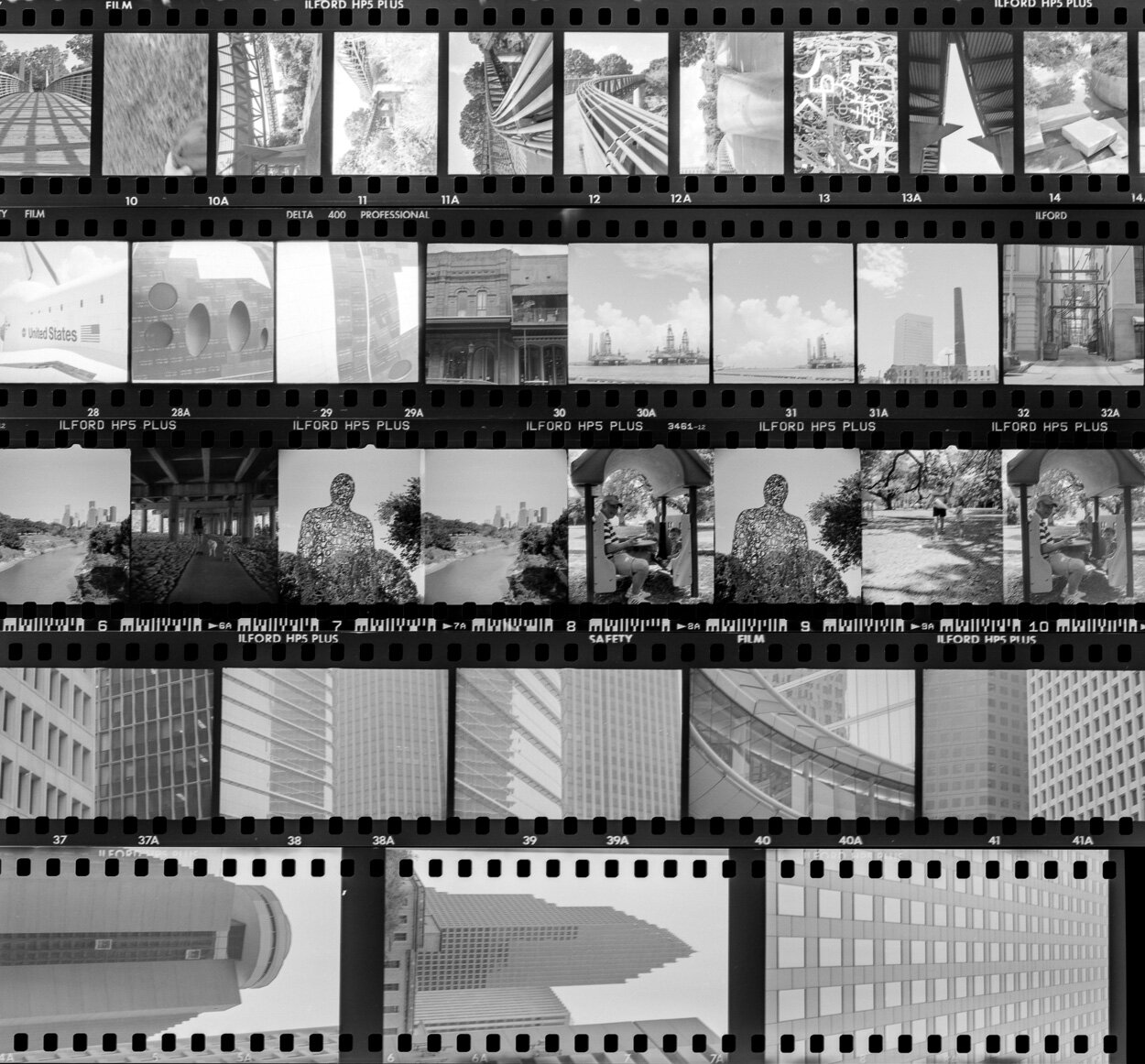Beyond 35mm - what other formats can you shoot on 35mm film?
From the top we see half frame (Olympus Pen FT), square (Robot II), almost-square (Stereo Realist), 35mm (Rollei 35s) and panoramic (Hasselblad 500cm with 35mm adapter) images sizes all on standard 35mm film rolls.
35mm roll film has a fixed width and sprocket holes. But don’t think it is limited to shooting 35mm “full frame” images!
Like its medium format cousin, 120 roll film, there are plenty of aspect ratios available to the 35mm shooter. Images usually take up the full width of the roll, and the camera used dictates how long across the sprockets the image will be.
Half Frame
The smallest image size I’ll discuss here is “half frame” (18x24mm), which is made possible through compact interchangeable lens cameras such as the Olympus Pen F. It is literally half the size of a regular 35mm frame (24x36mm) so you get double the shots (72 rather than 36). The images made in the same way a 35mm movie camera would do it, as the long-side of the image is now perpendicular to the sprocket holes. Half the image size means that the grain is twice as big as you’d find in a full-frame image. Two options here: (1) Use slow film like 100 speed that has smaller grain or (2) embrace the grungy grain of 400 or higher speed film.
Square
I’ve not come across many cameras that take square pictures on 35mm rolls, but one I have used is the Robot II (this camera has another cool feature that it is spring driven, so you can rapid fire many shots in a row). There are no “landscape” or “portrait” orientation decisions with the square format. The images are 24x24mm and 50 exposures can fit on a regular 35mm roll.
The Stereo Realist takes pairs of pictures to create a psudo-3D image when viewed cross-eyed or with a special viewer. The images can also be viewed and printed individually. The format is not-quite square at 23x24mm.
Panoramic
You can find dedicated panoramic cameras such as the Hasselblad XPan that take 24x65mm exposures. Now were are larger than "full-frame” the film grain is getting smaller relative to the image dimensions, but we are fitting fewer shots on the roll.
It is also possible to find adapters that squeeze 35mm film into medium format cameras. This creates 24x60mm images on The Hasseblad 500cm (as shown in the image above) and even 24x90mm is possible with a 6X9 camera. One cool feature of using medium format cameras is that the entire 35mm width of the roll is exposed, including the area where the sprocket holes are!
Why use these different formats?
Here is the trade off:
Smaller-than 35mm images are lower quality because of the larger relative grain size, but you get a lot more shots on a roll. This is great for vacation shots, testing ideas or when the grainy look is desired. It also means the camera and lens can be smaller, making it a more portable solution.
Larger-than-35mm images sizes look cleaner for a given film speed, but you get fewer shots on a roll.
Regular 35mm images split the difference, and because of its popularity the majority of film cameras available use this format.


